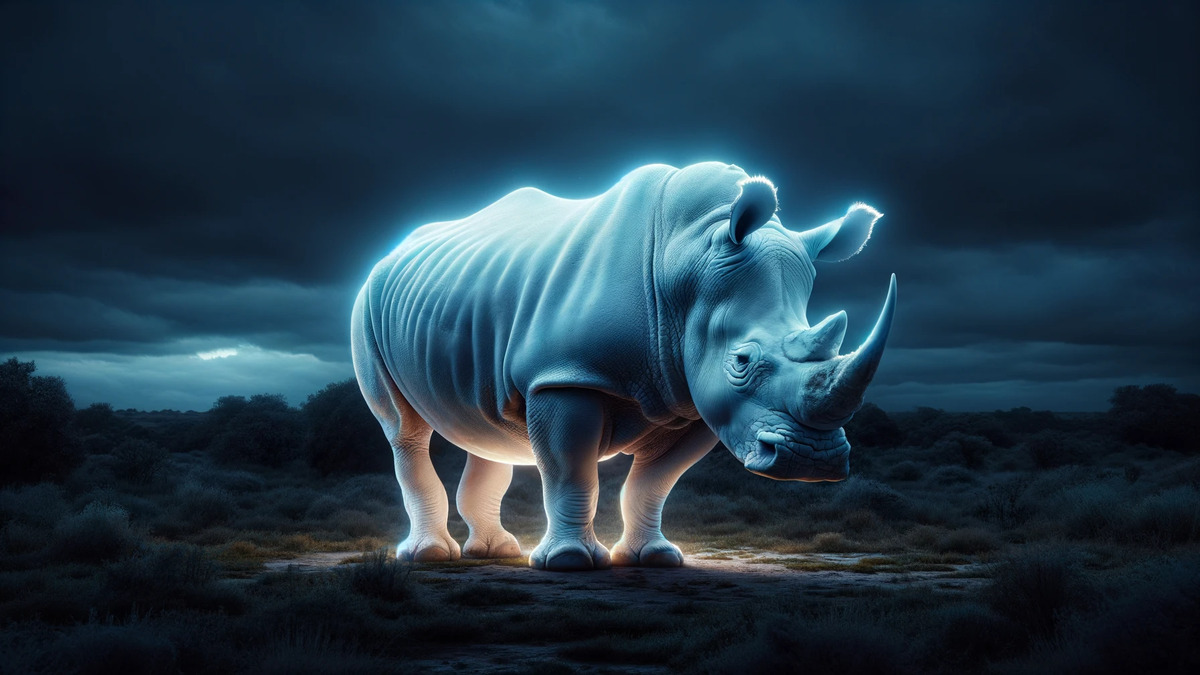The word rhino is from the Greek ‘rhino’ and ‘ceros’. In other words, it is derived from nose and horn, which translates as ‘nose horn’.
They have poor eyesight. Therefore, they rely on their sense of smell and hearing. However, this does not mean that they are completely blind. It is like a person with very poor eyesight who does not wear glasses.
At first glance, rhinos may appear similar to other large herbivorous mammals such as elephants and hippopotamuses. However, closer inspection reveals significant differences. Unlike elephants, rhinos have a relatively large head-supporting muscular hump. They are also not semi-aquatic, unlike hippos.
Above all, as can be seen from the fact that they have three-toed feet, they belong to the group of odd-toed ungulates, which is limited to a few species such as horses and tapirs. In this respect, they are fundamentally different.
There are five extant species, each distinguishable by specific characteristics. The white rhinoceros, native to Africa, is the largest species, with a large mouth. The black rhino, also native to Africa, has a pointed upper lip.
The lips of the Indian rhinoceros are semi-encrusted and can feed on a variety of plants. African rhinos (black and white rhinos), on the other hand, have a more specific diet, with black rhinos eating leaves and white rhinos eating mainly grasses. The black rhino’s pointed lips may have evolved to make it easier to eat leaves.
They are known to be very territorial. Males mark their territory in a unique way by rubbing the soil with their hind legs and spreading urine.
Their skin can be up to 5 cm thick. However, they are very sensitive to sunburn and insect bites. They therefore often find comfort in mud, which acts as a natural sunscreen and insect repellent. The rhinos walk around with mud slathered on their bodies, much like we slather on UV-protective cream.
With the exception of mother rhinos and their cubs, rhinos are known to be fairly solitary animals. They prefer to live alone and often shun each other.
They are endangered. The Javan and Sumatran rhinos in Indonesia are among the most endangered species in the world. Each has a population of less than 100 individuals. (For reference, even the endangered Sumatran tiger has around 500 animals, which is a very dangerous number.)
Ear and eye differences: rhinos’ ears and eyes function independently of each other. This means that rhinos can move their ears in different directions to pick up more sound while their eyes look at something else.
Horn composition: rhino horns are made of keratin, not bone. Keratin is the same type of protein that makes up human hair and nails. It is often poached and used as a medicine, but it is not something to be prized or appreciated, considering that it is essentially a claw.
The white and black rhinos live in Africa, and the Indian, Javan and Sumatran rhinos in Asia.
Like other animals, they play an important role in ecosystems. They control the growth of vegetation and form habitats for other organisms, and their protection acts as an umbrella that indirectly protects many other species in their habitat.
Their bodies have evolved over millions of years to survive in harsh environments. A common feature of rhinos is the presence of one or two horns on their snout. These horns, made of the same keratin as human hair and claws, are used for a variety of functions, including defence, showing off their dominance and digging for water and food.
African rhinos have two horns, whereas Asian rhinos (except the Sumatran rhino) usually have one.
Despite their heavy appearance, rhinos can reach speeds of about 50-60 km/h) when threatened or chasing a mate.
It has been known to humans since ancient times and was often depicted in cave murals by early humans. However, it was not until the Age of Exploration and Colonial Expansion that European scientists began to systematically study and classify the rhinoceros. As knowledge accumulated over the centuries, each of the five species was identified.
Did you know that the white rhinoceros is not actually white? Its name is a mistranslation of the Dutch word ‘wijde’, meaning wide. The white rhinoceros therefore has a wide, square mouth. (The black rhino, as already mentioned, has a triangular mouth.)
White and black rhinos live in Africa, where the white rhino is said to be just slightly larger and more sociable.
They have the longest gestation period of any mammal at 16 months.
Although a little messy, rhino dung puddles serve as a communication tool, letting other rhinos know the age, sex and breeding status of the depositor.
The longest recorded life span of a rhino in zoos is 49 years, but the average life span is much shorter. However, due to threats from poaching and habitat loss, the lifespan of rhinos in the wild could be much shorter.
Poaching has been rampant as horns have been coveted for their medicinal properties and as a status symbol. It is no different from eating or drinking cut human cut nails, as mentioned above…
There is an African proverb that says, “A tick does not need to be taught how to stick to a rhino’s back.” This proverb means that people naturally understand how to get out of a situation to their advantage.
South Africa, Namibia and Zimbabwe are home to the most important populations of rhinos: 16 000, mainly white rhinos. South Africa in particular is home to about 80% of the world’s rhinos.
Unfortunately, while these countries on the southern side of Africa are doing their best to protect them by creating protected areas, they are also the countries with the highest rhino poaching, mainly due to the illegal demand for rhino horn.
In the USA, the San Diego Zoo plays a pivotal role in rhino conservation efforts. The zoo has successfully birthed rhinos and is working to protect the endangered northern white rhino through advanced breeding techniques. The zoo’s safari park houses a wide range of rhino species.
Because of their large size and prehistoric appearance, they may look like dinosaurs. However, rhinos are mammals, while dinosaurs are a group of reptiles. Both mammals and reptiles belong to a large group of animals called vertebrates, but they are separate animals with different evolutionary histories.
In detail, dinosaurs lived during the Mesozoic Era, between 230 and 65 million years ago. And all dinosaurs, except birds, became extinct at the end of this period. On the other hand, rhinoceros-like mammals first appeared in the Eocene, about 55 million years ago, long after the extinction of the dinosaurs.
In other words, although the rhinoceros has been on Earth for a long time, it is a much newer species with a different evolutionary lineage to the dinosaurs.



コメント